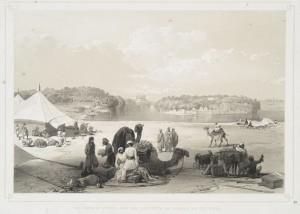Napier:
Like General Havelock, General Napier was such a popular figure in Victorian society he occupies a plinth in Trafalgar Square.
 |
 |
| Lord Napier as Governor of Sindh | Contemporary print of Sindh |
http://en.wikipedia.org/wiki/Charles_James_Napier
General Sir Charles James Napier, GCB (10 August 1782 – 29 August 1853), was a general of the British Empire and the British Army‘s Commander-in-Chief in India, notable for conquering Sindh in what is now Pakistan as well as for success in the Peninsular War against Napoleon – in this conflict Napier had been left for dead in one battle and had two horses shot dead beneath him. At the age of 60 he was sent out to India where he became Commander-in-Chief.
General Napier was a man of his times and upbringing, so he seems to have had little sympathy or tolerance when it came to dealing with ‘insurgencies’ in India during his reign as Commander-in-Chief in India; he expressed his philosophy as such:
“The best way to quiet a country is a good thrashing, followed by great kindness afterwards. Even the wildest chaps are thus tamed.”
Another story which reflects both his attitude, and that of the wider British public, concerned the British authorities forbidding the Hindu practice of Sati – about which the Hindu priests appealed to him. Sati was the custom, when a married man died, of burning his widow alive on his funeral pyre. According to Napier’s brother William, his reply was:
“Be it so. This burning of widows is your custom; prepare the funeral pile. But my nation has also a custom. When men burn women alive we hang them, and confiscate all their property. My carpenters shall therefore erect gibbets on which to hang all concerned when the widow is consumed. Let us all act according to national customs.” [5]
Never-the-less Napier was a popular figure in Britian, which is why there are so many roads named after him, and he has a plinth in Trafalgar Square.
